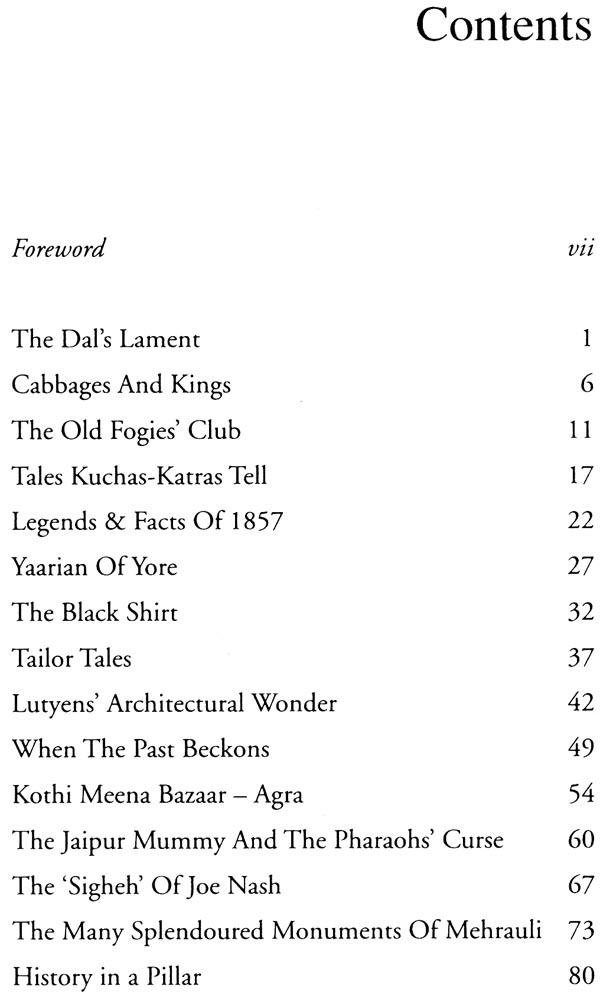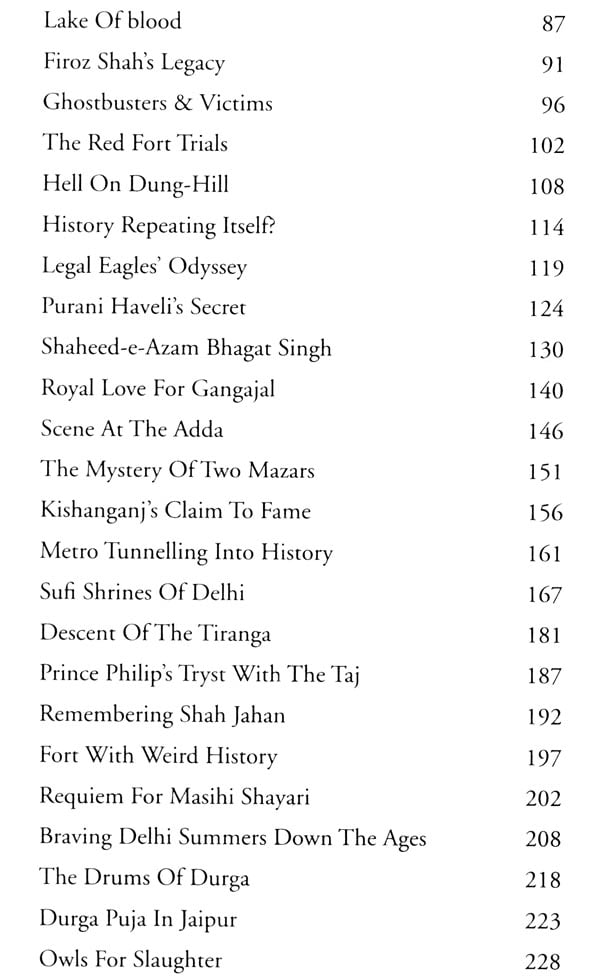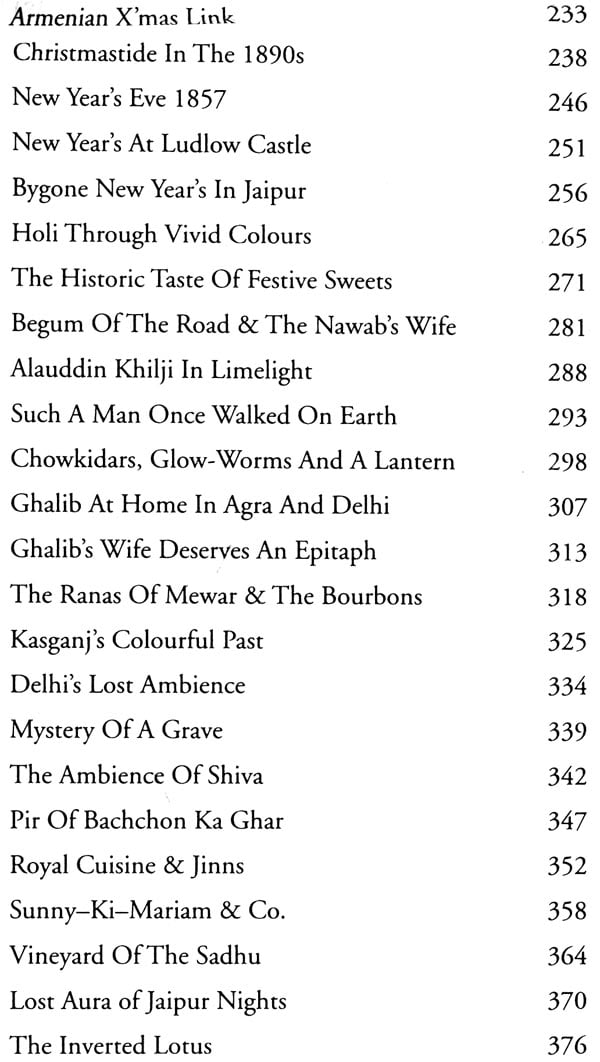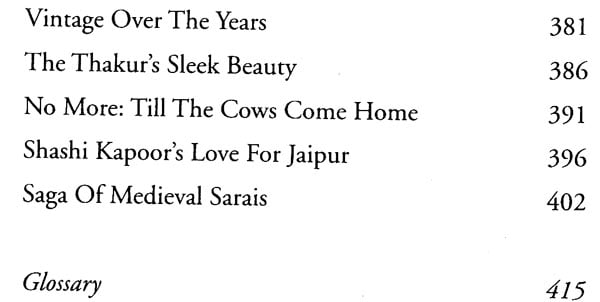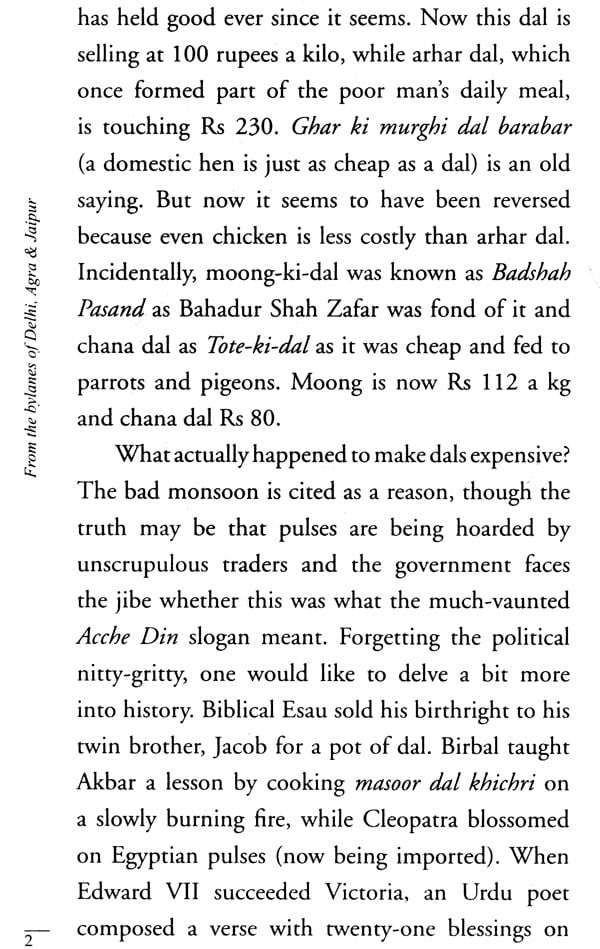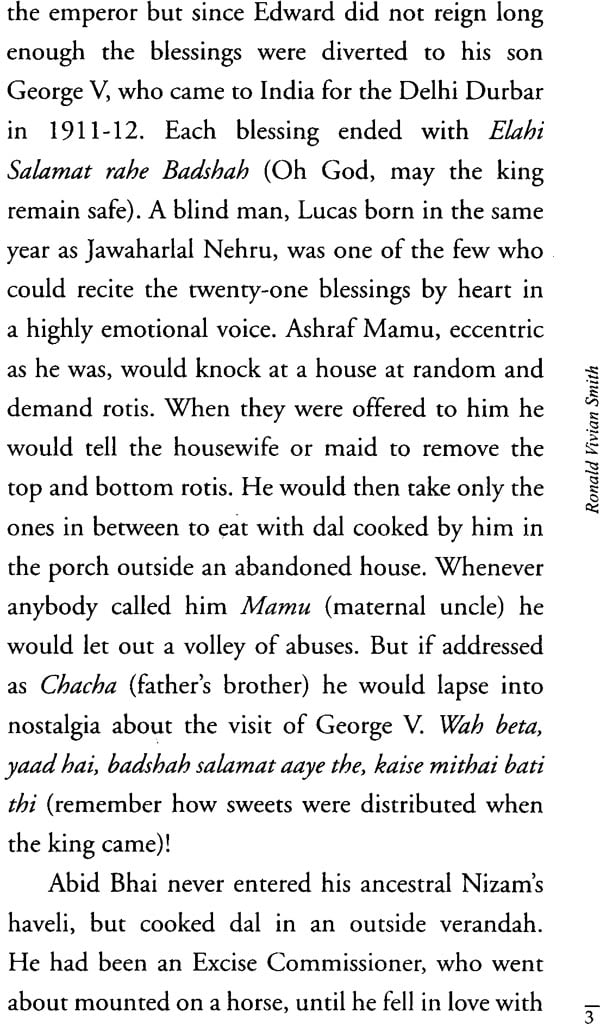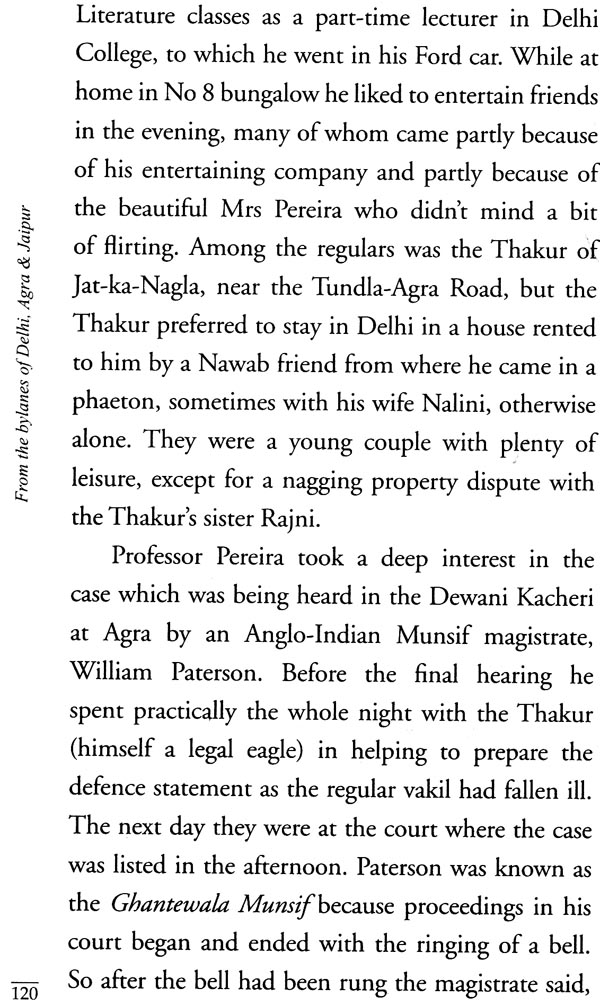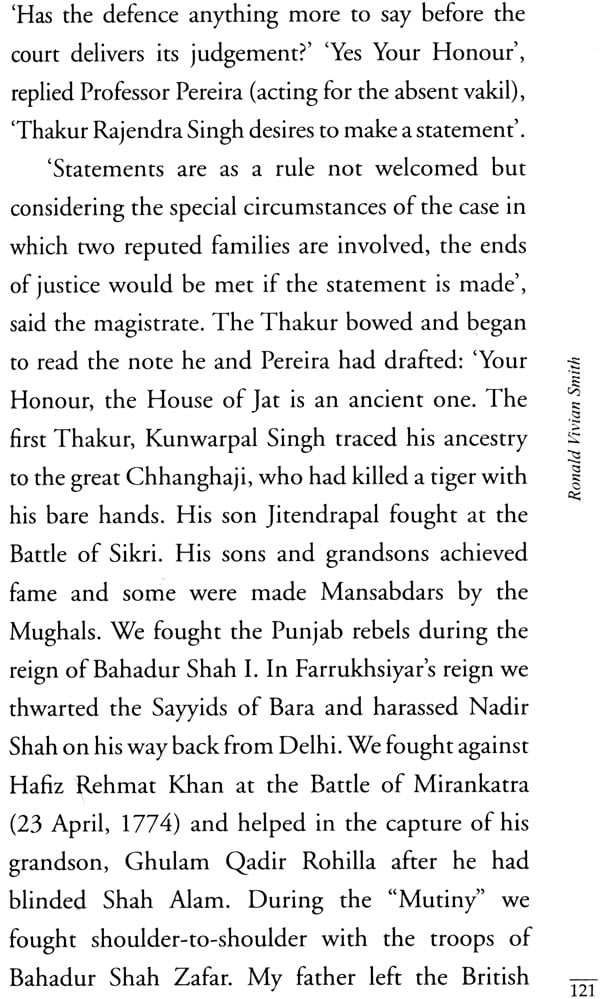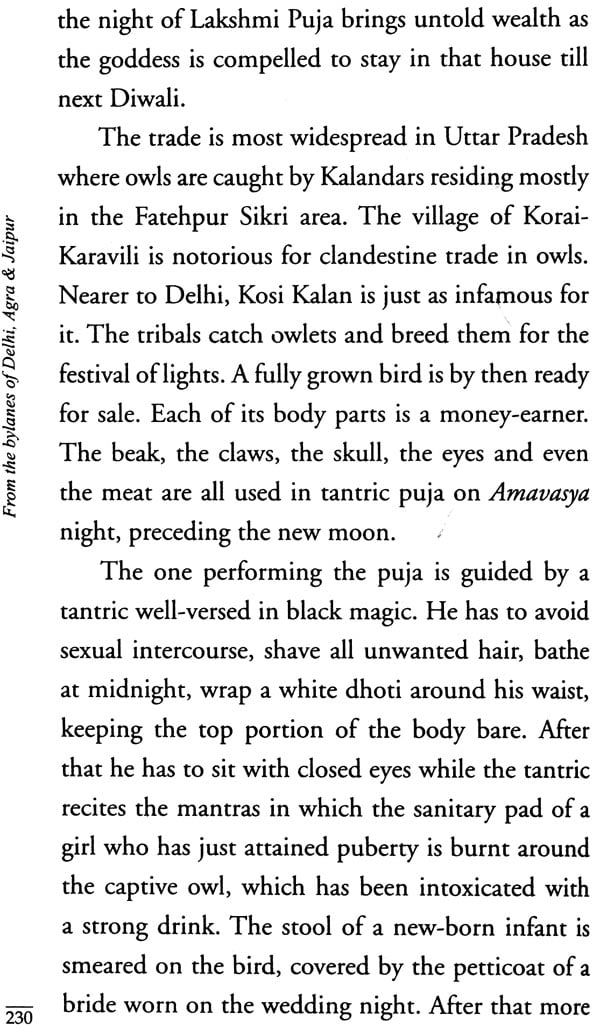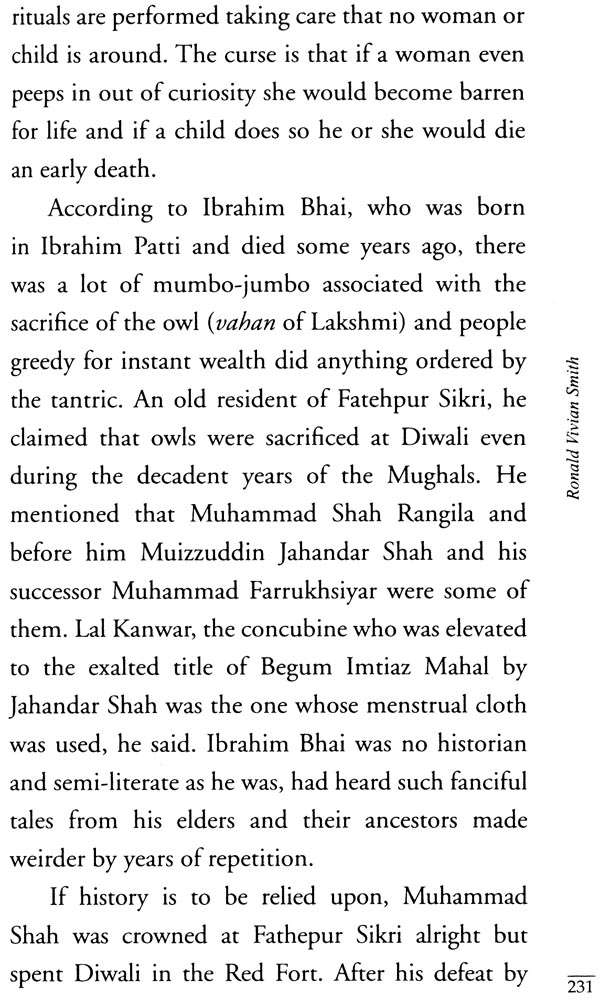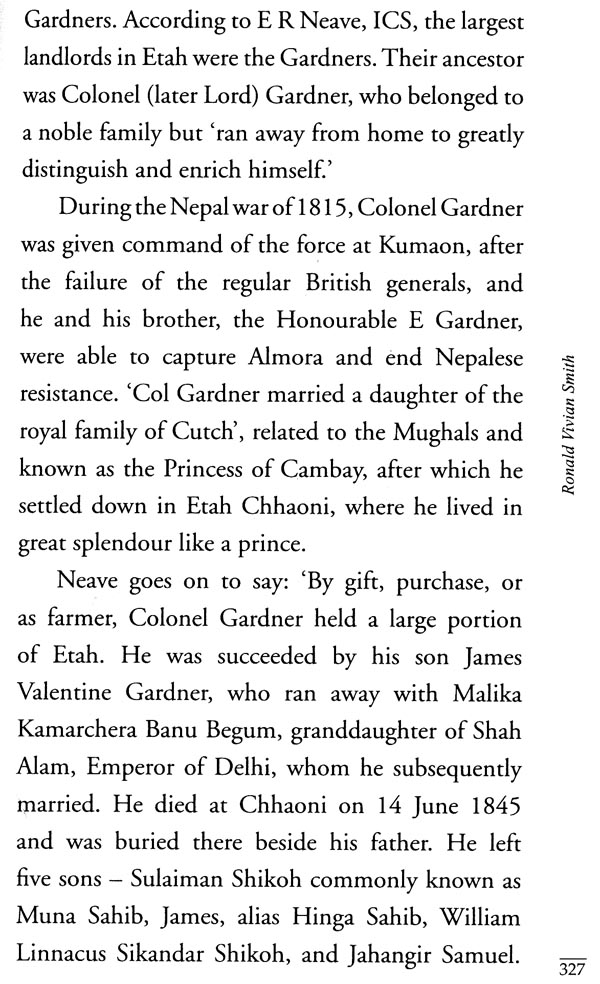
From the bylanes of Delhi, Agra & Jaipur
Book Specification
| Item Code: | NAP990 |
| Author: | R.V. Smith |
| Publisher: | Vitasta Publishing Pvt. Ltd. |
| Language: | English |
| Edition: | 2019 |
| ISBN: | 9789386473479 |
| Pages: | 580 |
| Cover: | PAPERBACK |
| Other Details | 8.00 X 5.00 inch |
| Weight | 300 gm |
Book Description
Shah Jahan's love for kakris and tarbuz ... the secret of Purani Haveli ... Shashi Kapoor's sweet tooth ... the story behind the Pir of Bachon Ka Ghar. .. the miracles of the Sufi saints ... the Mughal emperors' love for Gangajal. ... All this and more in this refreshing bouquet culled from the gardens of myth and truth that RV Smith has frequented for six decades to bring to his readers these stories in The Hindu and The Statesman. Smith Sahib knows the gossip and legends that spilled over in the city streets, the whispers that once floated down its lanes and bylanes ... what a Delhi Christmas was like in the 1890s, how New Year was celebrated after the siege and slaughter of 1857 and how Durga Puja came to Delhi and Jaipur, These stories keep the secrets of the cities safe from being lost forever.
A descendant of Col Salvador Smith (1783-1871) of the Gwalior Army, Ronald Vivian Smith is the recipient of the Canon Holland Prize and the Rotary Award for general knowledge and the journalism award (1997 -98) from the Michael Madhusudan Academy, Kolkata. History, antiquity, Egyptology, mysticism and the occult are his main interests, besides love for Mughlai food, which he shares with his wife, five children and grandson. Ronny Smith was born in Agra on 6 January 1938 and was educated at St Peter's College and St John's College, from where he got his MA degree in English Literature. He began writing for newspapers right from 1956 and then worked for the Press Trust of India and New Delhi, from where he retired as News Editor in 1996.
Ronald Vivian Smith has been Delhi's most faithful and constant chronicler for nearly six decades. In column after column and essay after essay, he has introduced his readers to sights and sounds not to mention people and places that we would have remained blithely unaware of, not the least because many of those sights and sounds, and people and places have been sacrificed at the altar of urban renewal. They live only in Smith's prodigious memory and, by extension, through his indefatigable writings.
Were it not for Smith Sahib and that treasure trove that is his memory, we would have been mehroom, bereft, of the story behind the Pir of Bachon ka Ghar, or the New Year festivities at Ludlow Castle, or who was the Thakur's Sleek Beauty, or what's the mystery behind the Owls for Slaughter, or what and where is the Hell on Dunghill. It is these and scores of such tales that find mention in this book. Saved from being lost forever, given the short life newspaper columns have, and especially in the age before the internet when old articles never made it to the archives, collections such as these acquire great significance.
Having walked the streets of Delhi since he first came to live here in 1961, Smith knows Delhi's past better than anyone else. And not just the city's parks and tombs and serais and mosques, he knows the gossip and legends that spilled over in its streets, the whispers that once floated down its lanes and bylanes, the stories he once heard either directly or from those who had, in turn, heard them from older denizens of Delhi. His history is not culled from dusty history books or air-conditioned reference rooms. Instead, it is distilled from the city's heat and dust, its scents and sounds. When mixed with dollops of piquant humour and a generous world view his version of history is, in a word, humane.
Smith speaks as he writes. Reading his columns, and I must say I have been an avid reader for years and, still, read them faithfully at every opportunity I get, I still find myself charmed by the easy intimacy to his writings about the past. He sounds like a chatty but prodigously knowledgeable and wise family elder. He has been answering all our questions about our city, questions we wouldn't know who to ask, whose answers we are unlikely to find in conventional books of history. For instance, what is 'Masihi shairi'? Which is the fort with the 'weird' history? What is the secret of 'purani haveli'? What is the 'legal eagle's odyssey'? What was a Delhi Christmas like in the 1890s? More importantly, how was New Year's eve celebrated in 1857 after the siege and slaughter of the spirited Indians?
It is these and other micro-histories that paint the small picture, like Jane Austen's proverbial two-inches of ivory, that add nuance to our understanding of the city that so many of us are happy to call home. Like the city flaneurs, the word being derived from the French noun flaneur, means 'stroller', 'lounger', 'saunterer', or 'loafer' Smith's seemingly aimless ramblings over six decades have yielded a rich crop of memories: vivid, colourful, detailed, graphic to the point of photographic recall. The painter with the pen, the urban explorer, the connoisseur of the street, R V Smith is all this and more. May he live long and continue to enthral us with his word pictures for many years to come.
**Book's Contents and Sample Pages**
